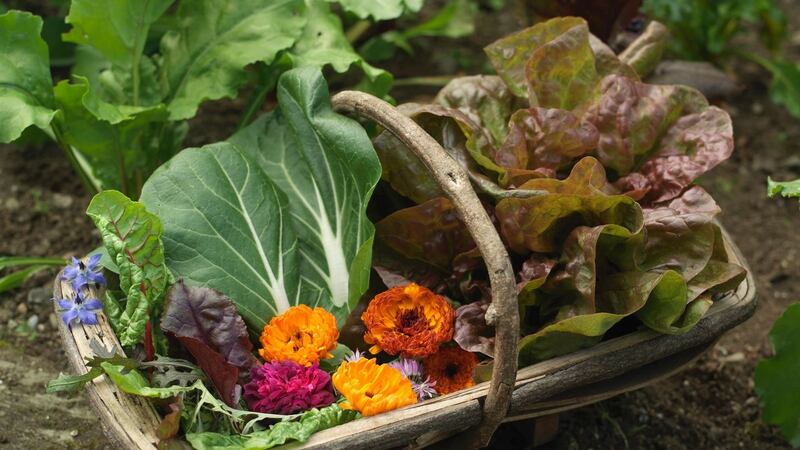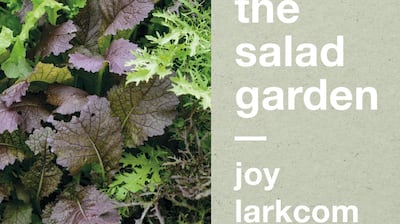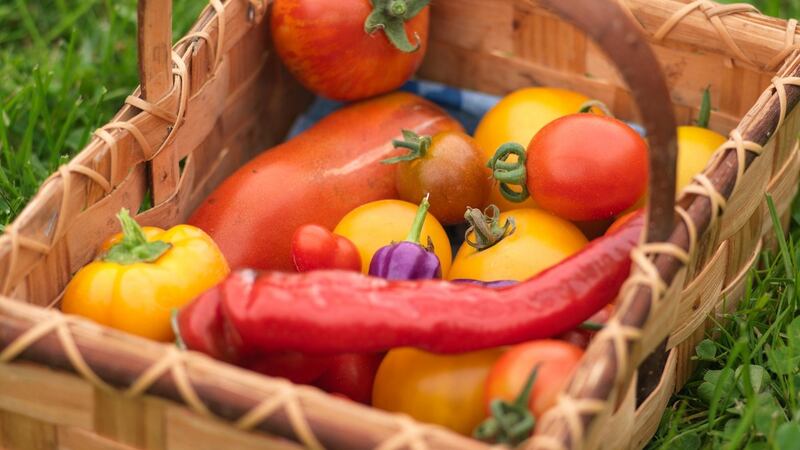There was a time, not so very long ago, when the word “salad” was likely to conjure up unlovely images of watery Iceberg lettuce, sad slices of unripe tomatoes and a few unhappy looking scallions, all topped with a sickly dollop of shop-bought dressing. How things have changed. The 21st-century version is a thing of beauty, packed with colour, flavour and texture while the range of delicious, homegrown ingredients that it might contain continues to expand.
Grated Florence fennel, spicy slivers of radish, crunchy sugar loaf chicory, peppery oriental leaves, tangy sorrel, frilly kale, a flash of scarlet or golden chard, a sprinkle of edible flowers such as nasturtium, pot marigold and heartsease violet, plus culinary herbs such as chervil, lovage, mint, basil, tarragon, dill and coriander – all are increasingly finding favour with a new generation of salad lovers.

The same goes for ingredients foraged freshly from the wild including dandelion leaves, bittercress, wild garlic, Alexanders, shepherd’s purse, seaweed and even chickweed.
As for those who like their salads to have a bit of weight and heft to them, new potatoes, beetroot, carrots, French beans, cucumber, celeriac, peas, globe artichokes, kohl rabi, peppers and of course, tomatoes, are all examples of flavoursome vegetables that also make an excellent addition to a salad bowl. All of these will also grow quite happily in an Irish garden, especially if the heat-lovers among them are given the protection of a glasshouse, polytunnel or sunny porch.
As for that mainstay – lettuce – there’s now a smorgasbord of different varieties that Irish gardeners can grow easily from seed, some especially prized for their flavour or their crunch, others for their exuberantly colourful leaves. Examples include fast-growing, tender butterhead-types such as the purple-leaved Marvel of Four Seasons, loose-leaf, cut-and-come again types such as Salad Bowl and Lollo Rossa that will provide repeated crops of tender leaves over many weeks. The sweet crispy semi-cos types such as the all-round classic Little Gem, and leaf lettuce varieties that are suitable for sowing densely and harvesting early, give a second harvest within weeks. Carefully timed successional sowing every two-three weeks will extend your lettuce harvest right into autumn, while if you have a polytunnel or glasshouse, there are varieties suitable for cropping throughout the year.
Culinary revolution
One of the people we can thank for this culinary revolution is the English-born, west Cork-based garden writer Joy Larkcom, whose groundbreaking book The Salad Garden was first published in 1984. To the delight of Larkcom's many loyal fans, an extensively revised and updated version of the book – beautifully written and illustrated, the definitive guide to growing your own salad ingredients – was re-issued just last month (Frances Lincoln, £16.99).

Covering everything from site preparation and home seed-saving to choosing the most productive, disease resistant, flavoursome varieties, it should be on the shelf of every kitchen gardener as well as those of food lovers and chefs. Larkcom’s attention to detail is such that there’s even a chapter on making the perfect salad including recipes for both raw and cooked salads as well as a range of tasty dressings. Mouthwatering examples include a carrot, avocado and Wakame seaweed salad, a summer salad of purslane and edible flowers, and a cooked salad of green beans with lemon and Parmesan.
Sound tempting? The good news for Ireland’s kitchen gardeners is that many classic salad ingredients are fast-growing annuals that complete their lifecycle within a few months. Indeed, some types can start to be harvested within a mere four-six weeks of sowing seed (especially if you want to use them as baby leaves) including lettuce, chard, rocket, summer purslane, sugar loaf chicory, oriental salad greens, edible flowers such as pot marigolds and nasturtiums and annual herbs such as basil, coriander, dill and chervil. Sow them now for harvesting from July onwards. There’s also still just enough time to sow seed of beetroot, carrots, radish, kohl rabi, peas, Florence fennel and French beans, but hurry.
The sowing date for heat lovers such as tomatoes, peppers and cucumber has passed, as it has for celeriac, but young plants can be bought in good garden centres as well as at upcoming garden shows. Paul Schulz of the Natural Growing Company will be selling his excellent range of sustainably-grown vegetable and salad transplants at the upcoming Laois garden festival, Buds & Blossoms, see Dates For Your Diary below for details.

Whichever delicious salad crops you choose to grow this summer, the basic rules of good gardening will apply. So do your best to give your plants a weed-free, fertile, moisture retentive but free-draining growing medium in a sunny spot, water young transplants until they’ve got their roots in the ground, and make sure to offer protection from slugs. Where growing space is limited, you can use large tubs, deep pots and generous sized hanging baskets but take special care to keep these well-watered and concentrate on growing space-efficient salad crops such as the leafy types mentioned above – lettuce, oriental greens, chicory, herbs – as well as tumbling varieties of tomatoes and a few edible flowers.
Where outdoor growing space is non-existent, it's well worth growing a few trays of microgreens on a warm, sunny windowsill (see my column of November 23rd, 2014, "Make Magic with Microgreens"). The yield won't be huge but these tiny edible seedlings can typically be harvested within a few weeks of germination and are both wonderfully decorative and intensely flavoursome. Added to even a shop-bought salad, they'll have a transformative effect, turning an ordinary dish into something very special.

This Week in the Garden
Continue to plant out tender, heat-loving plants such as bedding plants, dahlias, courgettes, squash, sweetcorn and French beans but before you do, always make sure that plants are properly hardened off (acclimatised to the tougher growing conditions of outdoors). Recently transplanted young plants are also more vulnerable to attack from slugs and snails so make sure to take careful precautions until they toughen up.
Rows of direct-sown vegetables often need to be thinned out at this time of year in order to allow the young seedlings to develop properly without having to compete for light, water and nutrients. Remember that the recommended final spacing between plants varies according to the species and variety. Carrots, for example, should be thinned to 3-4cm between plants, peas to 5cm, parsnips to 10-20cm (the larger the spacing, the bigger the resulting parsnip), annual spinach to 7-15cm and lettuce to 25-35cm. Beetroot is best thinned in two stages, initially leaving single seedlings at 5cm intervals and subsequently thinning to 20-25cm gaps. Young seedlings of some direct-sown flowering annuals also benefit greatly from being thinned including Nigella (to 30cm between plants), cornflowers (30-40cm), Ammi majus (to 30cm), resulting in bushier, more floriferous plants.
Dates For Your Diary:
Saturday, 10th June (10-4pm), Dalkey Garden School, Saval Park Road, Dalkey, Co Dublin, Garden Photography Workshop with professional photographer Maeve Robinson, €80, see dalkeygardenschool.com.
Sunday, 11th June (from 12pm-6pm), Spink Community Grounds, Abbeyleix, Co Laois, Laois Gardening festival, "Buds & Blossom" with specialist nursery plant sales, and guest speakers Dermot O'Neill, Mairead Lavery, Dr John McCullen and Fionnuala Fallon, see laoisgardenfestival.com for details




















